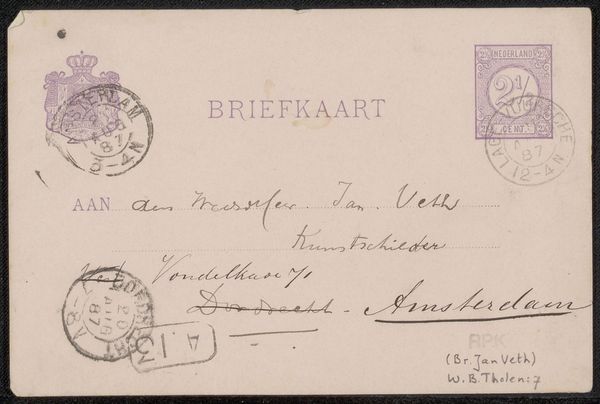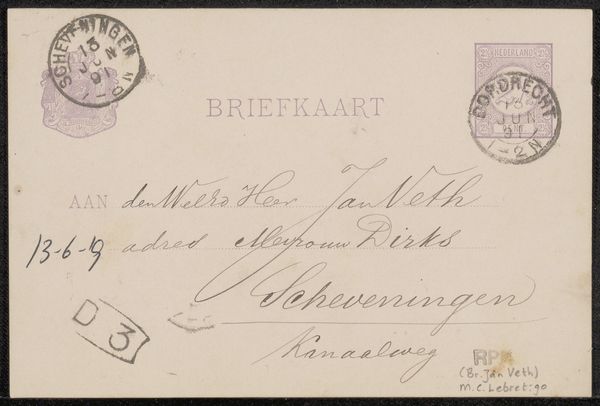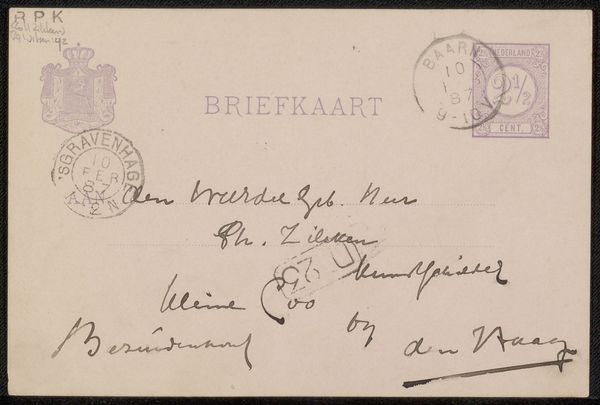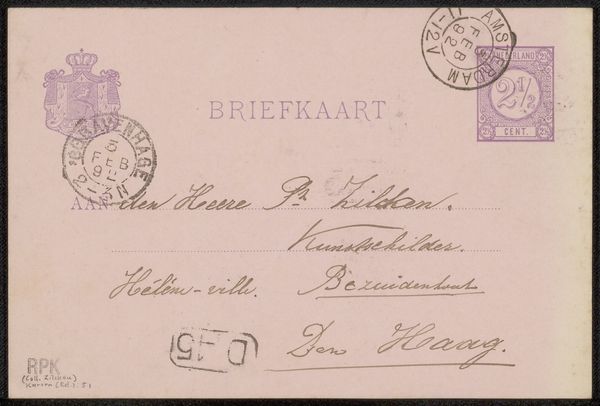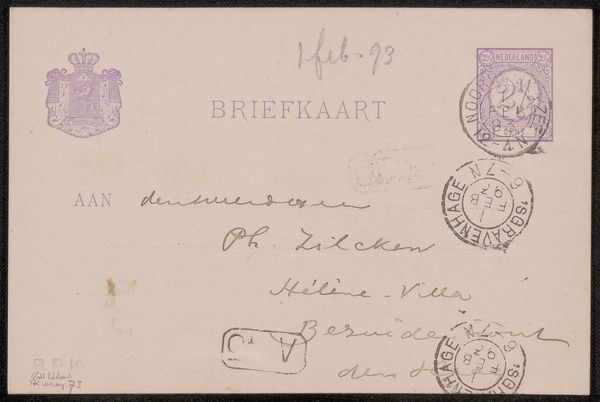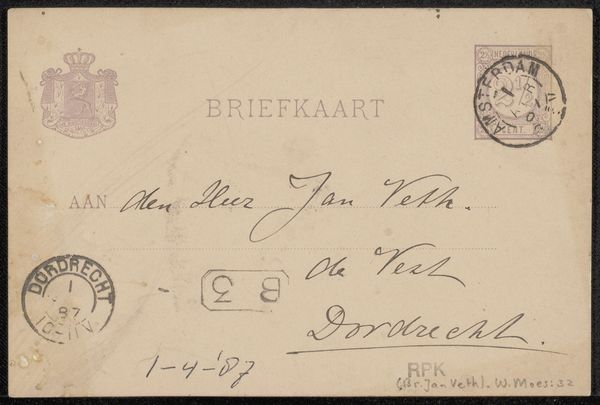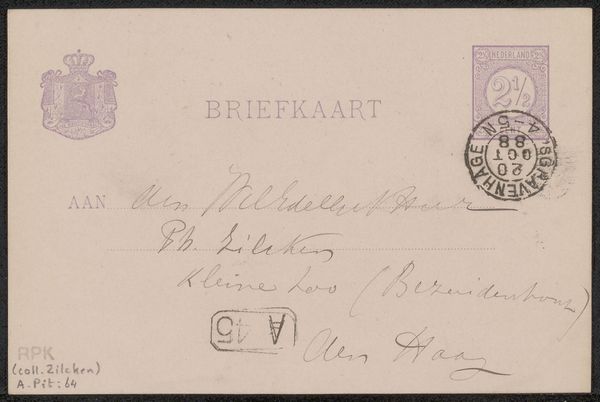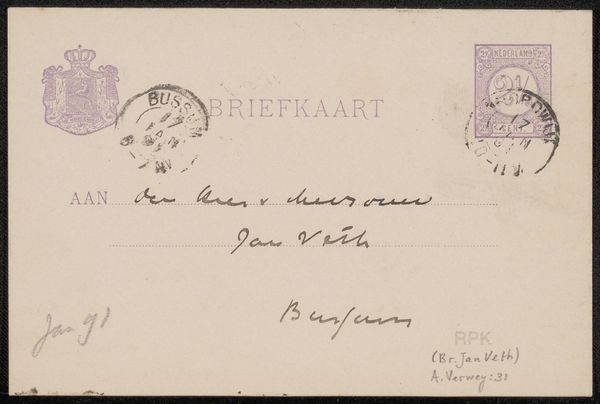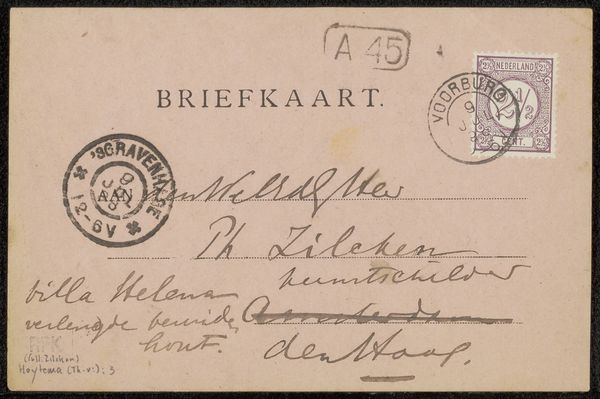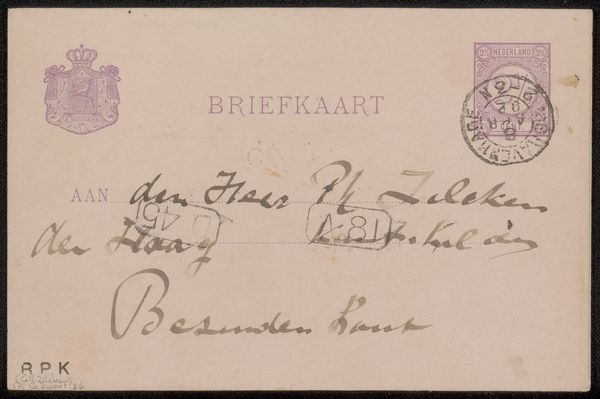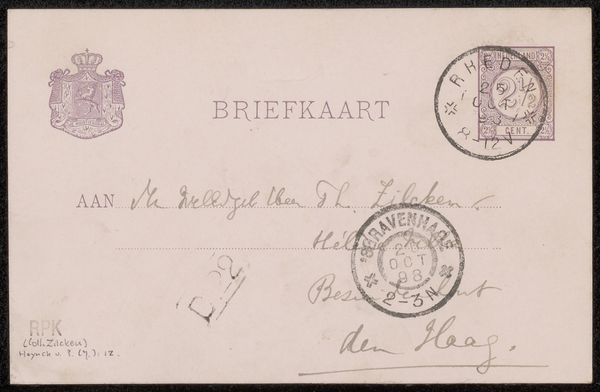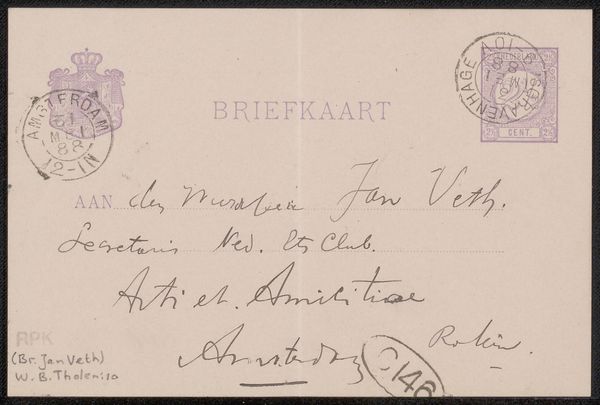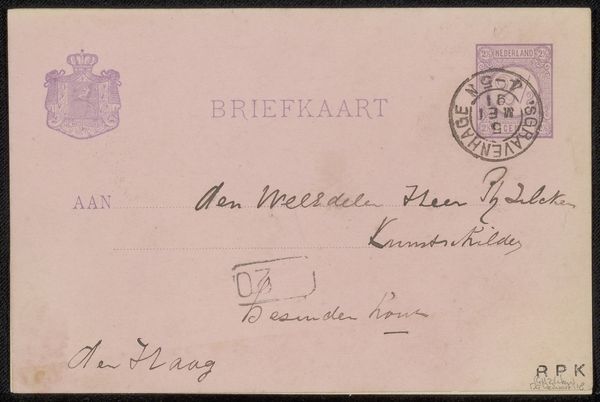
Copyright: Rijks Museum: Open Domain
Curator: So, we are looking at “Briefkaart aan Jan Veth,” a pen and ink drawing on paper created before 1887 by Albert Verwey. What strikes you initially about this unassuming piece? Editor: It seems like a pretty straightforward postcard, the kind you might send on vacation. The stamps and handwritten address feel very personal, almost intimate. But, the calligraphic quality gives it a sort of old world formality at the same time, so I am a little unsure of how to think of this. How do you interpret it? Curator: Beyond its apparent simplicity, this postcard encapsulates the intersection of personal correspondence and artistic expression within a specific historical and social context. Consider the act of writing a letter in the late 19th century; it was a primary mode of communication, carrying social weight that is largely absent today. For me, Verwey’s calligraphic approach elevates a mundane object into a statement. Why use this script? What power relationships are subtly enacted by choosing that medium for this correspondence, considering issues of literacy and social hierarchy at the time? Editor: That makes sense. The beautiful script makes it seem almost like art itself. Curator: Exactly. And look at the Romantic style. While often associated with paintings and landscapes, here Romanticism is translated into this deliberate aestheticization of everyday life, of relationships, even. It encourages us to consider how identity and artistic intention can be communicated through even the smallest of gestures. Editor: I hadn’t thought about the impact of just sending a simple postcard! I definitely see how viewing the artwork in context adds another layer. Curator: And it’s precisely in these layers that we find the richness of art history. Editor: I will definitely keep that in mind. Thanks!
Comments
No comments
Be the first to comment and join the conversation on the ultimate creative platform.
